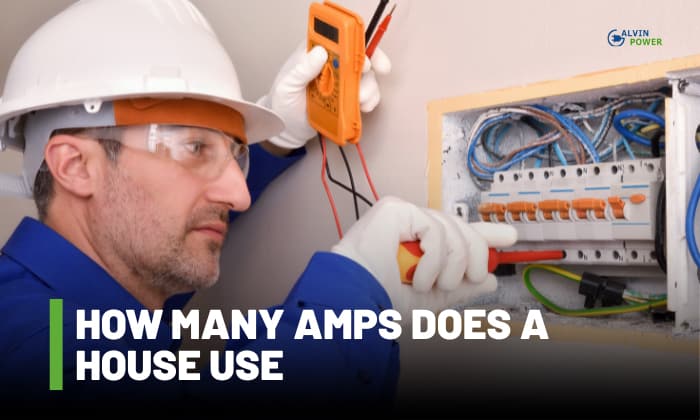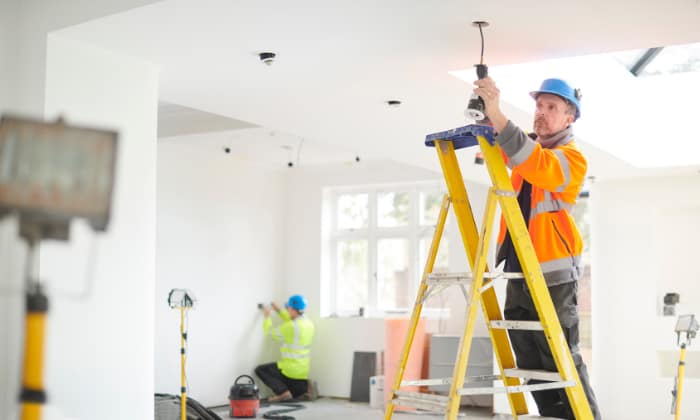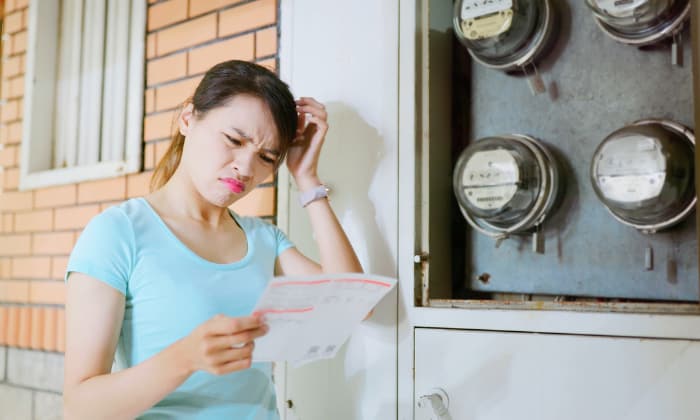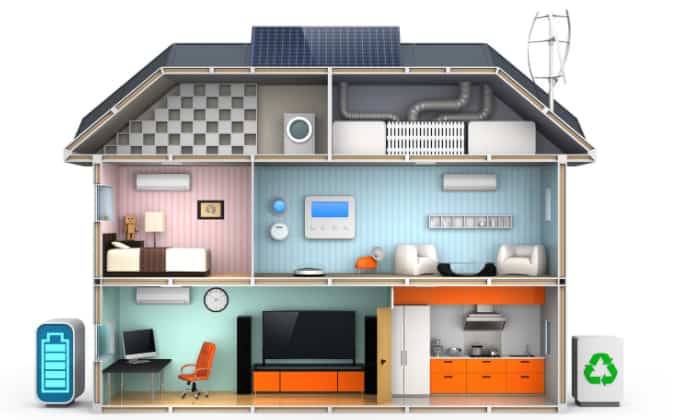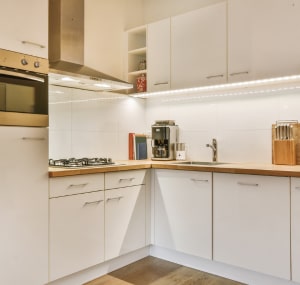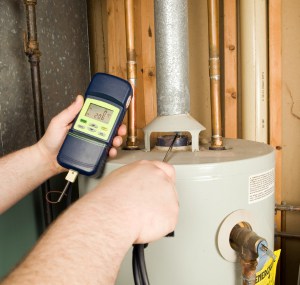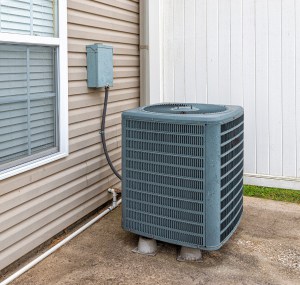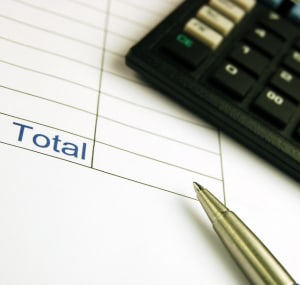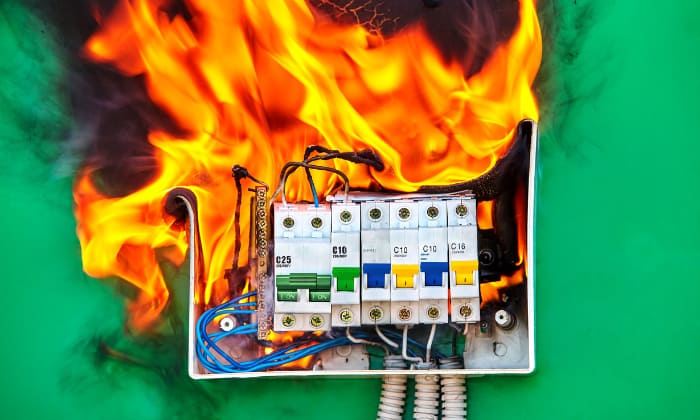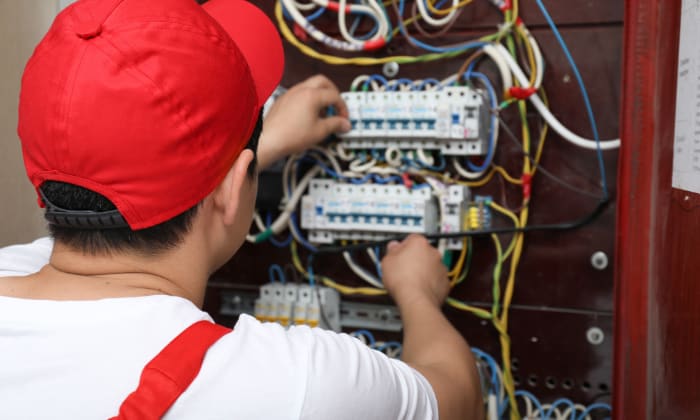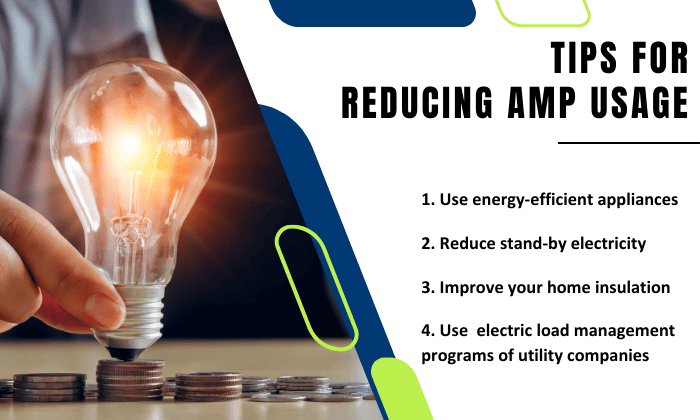Our houses need electricity more than ever. Appliances, equipment, and even vehicles are slowly being connected to the grid. Modern houses keep up with upgraded service panels to draw more current.
How many amps does a house use? 100 to 200 amp service panels are common in modern homes but can reach up to 400 amps for larger homes. Older houses, though, might have 60 amp service.
Table of Contents
Avg Amps of a Home
- A new home with multiple high-powered appliances and 3000 square foot houses now use a circuit breaker panel with at least 200 amps.
These provide double the slots that a 100 amp service can have and can carry double the current amount. A 200-amp service can simultaneously run the central HVAC unit, the electric range, and the electric dryer.
- The minimum residential service for a single family home is 100 amps. 100 amp service at 240 volts with 2 hot wires and 1 neutral wire is common in existing installations. This kind of supply is generally useful for homes with less than 3000 square feet and is good for 1 to 2 high-power electrical appliances.
- Homes built in 1965 or older might have 60 amp fuse boxes. This kind of house amperage only has one slot for a 240-volt device and is not enough for multiple high current devices like electric dryers.
Remodeled homes must replace their 60-amp fuse box with a minimum circuit breaker box amps of 100 amps, more so if they have a 30-amp fuse box from the 1940s.
If a 200 amp service is not enough, then larger electrical panel sizes can be used. Residential supplies can go as high as 400 amps.
Remember, though, that these are the maximum values that your service can supply. The actual current draw may vary depending on the appliances that are turned on.
Amp Usage and Electricity Bill
Amp usage is related to electric power and energy, so higher amp usage for a significant amount of time will increase your electricity bills. Running high-power devices will draw more current, use more energy, and will cost more to operate.
The cost or running an appliance can be determined using:
\[ \text{cost} = \text{power (kilowatts)} \times \text{operating time (hours)} \times \text{electricity rate (per kWh)} \]
and
\[ \text{electrical power (kilowatts)} = \frac{\text{current (amps)} \times \text{voltage (volts)}}{1000} \]
Factors Affecting Household Amp Usage
The main factor that contributes to the amount of amps in a house is the current draw of the appliances from the service. More appliances usually mean more current draw. Also, high-powered devices will require more current at the same voltage, and some may use more energy at startup.
How Many Amps Do I Need in My House?
We can choose the right service panel if we can determine the estimated total amps usage using the total load of all appliances in the house. Electrical load calculation is usually done by electricians or engineers when planning the service panel. An online load size calculator is also available for your convenience.
Here is a step-by-step home electrical amperage calculation for a 1500 square foot 3 bedroom house. Take note that we will use the equivalent unit volt-amp (VA) instead of watts:
1. Calculate the general load requirement based on the indoor area, small kitchen appliance circuits and laundry circuits.
First, the total lighting need is 3 VA per square foot of the home. So, our 1500 square foot house has a total lighting load of:
\[ \text{Lighting load} = 3 \, \text{VA} \times 1500 = 4500 \, \text{VA} \]
Next, the kitchen must have at least 2 small appliance circuits, and the laundry must have at least 1 laundry circuit. These appliances are plugged into a 15 or 20 amp receptacle, the standard amps for house outlet. Each of these circuits is rated at 1500 VA, so for our example, this will have a load of:
\[ \text{Small appliance circuit} = 1500 \, \text{VA} \times 2 = 3000 \, \text{VA} \]
\[ \text{Laundry circuit} = 1500 \, \text{VA} \times 1 = 1500 \, \text{VA} \]
We then get the total general load:
\[ \text{General Load Requirement} = \text{lighting load} + \text{small appliance circuit} + \text{laundry circuit} \]
\[ \text{General Load Requirement} = (4500 \, \text{VA}) + (3000 \, \text{VA}) + (1500 \, \text{VA}) = 9000 \, \text{VA} \]
2. Calculate the total appliance and load motor requirement for larger appliances.
We add all the other larger appliances and motor type loads like water heaters, dryers, cook tops, EV chargers, microwaves, and window air conditioners. You can check the nameplate for accurate values. You can also use a household amperage chart online for an estimate.
Let’s say we have a 4800-watt dryer, a 5000-watt range, a 1580-watt microwave, a 4500-watt water heater, and a 7200-watt EV charger:
\[ \text{Large appliances} = (4800 \, \text{VA}) + (5000 \, \text{VA}) + (1580 \, \text{VA}) + (4500 \, \text{VA}) + (7200 \, \text{VA}) = 23,080 \, \text{VA} \]
3. Combine the general load and the larger appliance load, and adjust the excess of 10,000 VA by 40%.
The total of the general load and the larger appliances load will be 32,080 VA. If the total load exceeds 10,000 VA, then we adjust the excess of 10,000 VA by the demand factor of 40%. For our example, the excess of 10,000 VA is 22,080 VA, so the adjusted load will be:
\[ \text{Add the load of HVAC units to get the final total load} = 10,000 \, \text{VA} + 22,080 \, \text{VA} \times 0.40 = 18,832 \, \text{VA} \]
4. Add the load of HVAC units to get the final total load.
If your home has a central air conditioning unit, simply add it to the general and large appliance load. If we have a 3000-watt central HVAC, then our total load will be 21,832 VA.
5. Calculate the total current based on the load and nominal voltage.
The total current at 240 volts can be calculated as:
\[ \text{Total Current (amps)} = \frac{\text{Total load (volt amp)}}{\text{Voltage (volts)}} \]
\[ \text{Total Current (amps)} = \frac{21,832 \, \text{VA}}{240 \, \text{volts}} = 91 \, \text{amps} \]
6. Add 25% of the amps should a house have continuous loads.
The overcurrent protection devices used must be rated at 100% for non-continuous loads and 125% for continuous loads. We have an EV charger and central air conditioner as continuous loads, so:
\[ 91 \, \text{amps} \times 1.25 = 114 \, \text{amps} \]
We can use a service panel with a minimum rating of 125 amps to run a house with a load of 114 amps. Higher electrical panel ratings like 200 amps can be used if you want to add more appliances in the future.
Electrical Safety
Calculating the amp requirements of homes is important because the right service can adequately supply power to all appliances. It can help you choose the right panel to accommodate your existing and future electronics. In a way, it can also help determine your energy consumption.
If your load is too much for your service panel, it may become a fire hazard. In a well-designed residential electrical system, the main problem with overloading is that your main service breaker will trip frequently.
If your main service breaker is damaged, though, then the panel may overheat or cause sparks during overloading. It may emit the smell of melting plastic and crackling noises that indicate damage. The lights may also flicker.
The best way to prevent overloading is to have a service that can meet your needs. You can either upgrade your service panel or use smart service panels to prioritize some higher energy loads when needed.
How to Tell What Amp Service is Installed
The easiest way to know your existing service panel is to look at the rating of the main service breaker. The main service breaker shows the maximum current the panel can handle. If the breaker lists 100 amps, then you have a 100-amp service.
Is 100 amp service enough for you? If you encounter the symptoms of overloading we’ve talked about, then it’s time for an upgrade to a 200-amp service or greater.
200-amp service has been the normal amp rating for panels since the 1980s and can provide more room for future appliances, but it may cost up to $2000.
Tips for Reducing Amp Usage
1. Use energy-efficient appliances
Appliances with Energy Star ratings use less energy than those without. This translates to lower current draws during operations. Energy Star-rated appliances can save you as much as 30% in your electric bills.
You can also replace your incandescent lights with LEDs. LEDs use 25% to 80% less electricity compared to incandescent bulbs.
2. Reduce stand-by electricity.
Appliances that are on standby can still draw electricity. Standby electricity accounts for up to 10% of the average amperage of a house. Unplug appliances and power strips or smart plugs to reduce standby electricity and protect your electronics from potential surges.
3. Improve your home insulation.
A well-insulated home can reduce the electricity consumption of your heating or cooling devices. Good insulation makes it easier for appliances to reach the desired temperature.
4. Take advantage of the electrical load management schemes of your utility companies.
While this method does not really change the amp usage, it can reduce the cost of running appliances per day. Utility companies have electric load management programs to reduce energy consumption during peak hours. They offer incentives to those who use electricity during off peak hours by offering cheaper rates.
Conclusion
To know how many amps does a house use, we need to look at the total load of the appliances it has. Houses typically have 100-200 amps service, but it can reach 400 amps in panel size.
If your breaker keeps tripping, you can consult a professional for an upgrade. A certified electrician can help you figure out the best supply for your appliances, so you can use the right service panel that delivers the amps you need without the risk of overloading.
Read more: Amp usage of a dehumidifier.

I am Edwin Jones, in charge of designing content for Galvinpower. I aspire to use my experiences in marketing to create reliable and necessary information to help our readers. It has been fun to work with Andrew and apply his incredible knowledge to our content.

